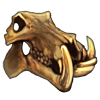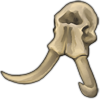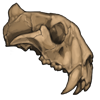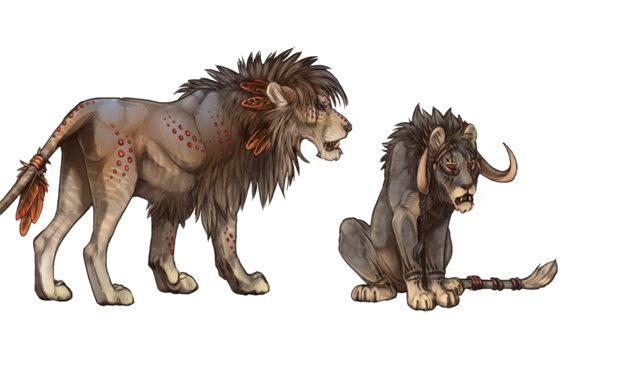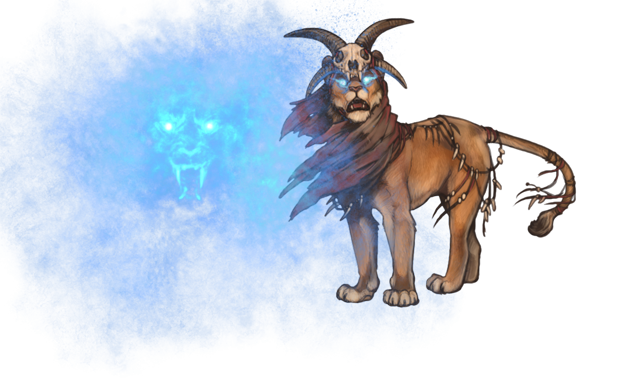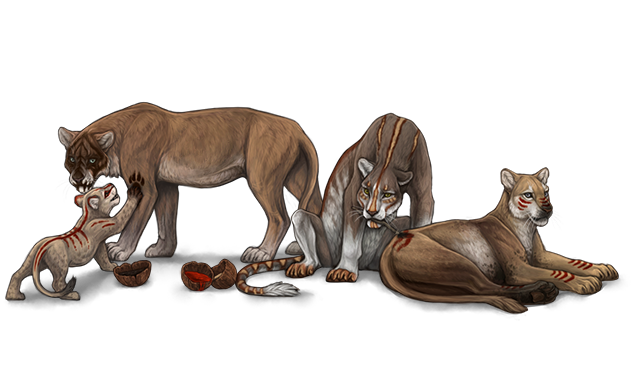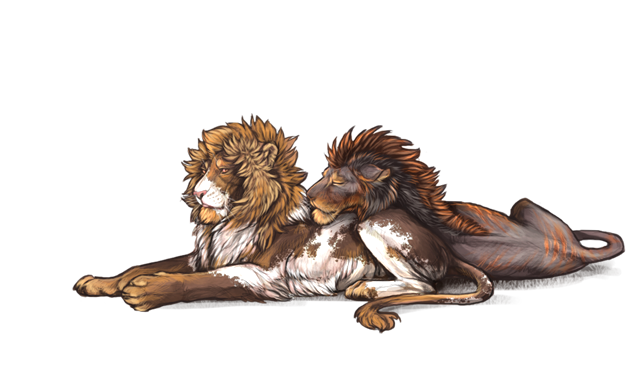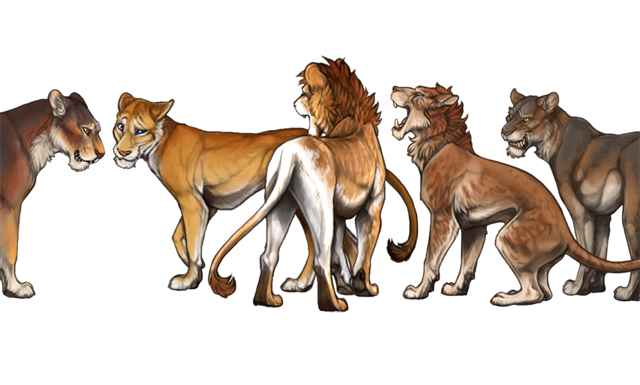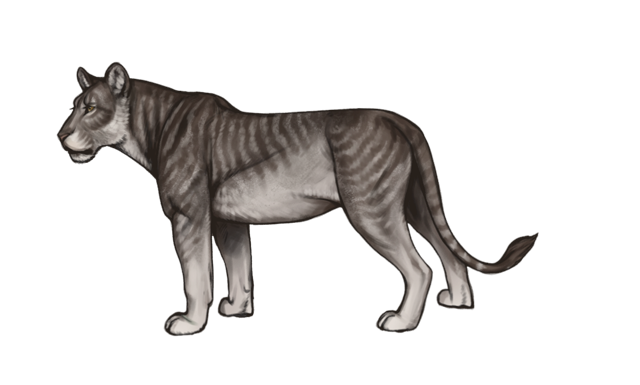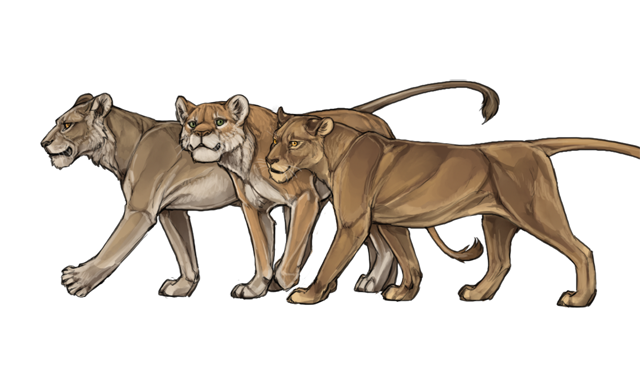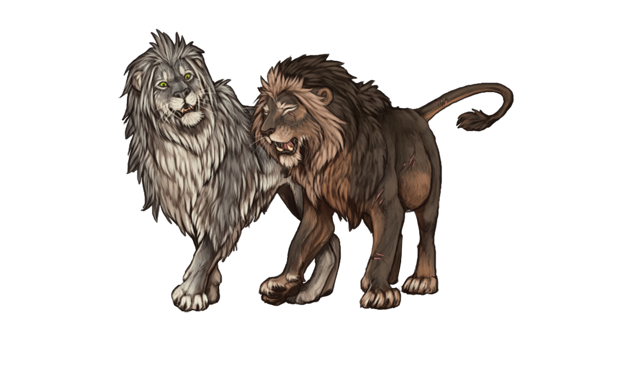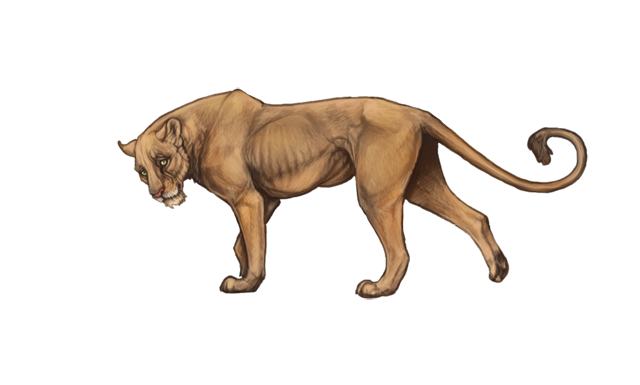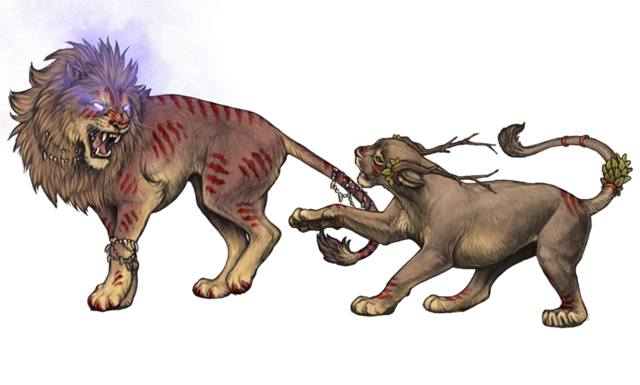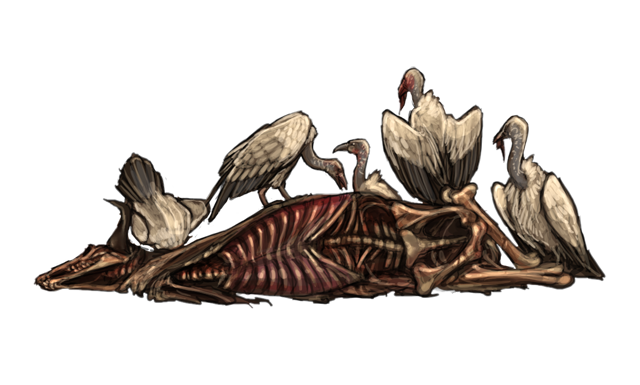The Mwanzo’Wasabana Era - Backstory
Baridi - the land laden with meadows, valleys, and plains pulled across miles. Fit for nearly every creature there is, big, small, whether they scurry along the ground or fly, a pint-sized termite, or a mighty elephant. Nearly all kinds of plants lay in the fertile land.
Baridi was most certainly a gift, a gift that was like cubs to a lioness, or fresh game to a huntress.
These paradisic lands were endowments from higher beings, like the ones that dragged the sun across the sky, or the ones that guided and defended. Surely these godly beings were in the physical likeness of lions. How else could a species be known to be such great kings? Rulers? Lords?
Their humble birthplace, a shamanic river, lay within Baridi in the Taros canyon. From the first morning of its creation, the river lay dormant of spiritual activity for centuries.
That was until a pure Amaak god, Korɨn, emerged from the waters in the form of a lion. Thereafter Korɨn’s birth, the Amaak god-species began emerging from the river by the hundreds. The River of Korɨn is what it came to be known as, in honor of first god to rise out of its current.
The tale-worthy birthplace of the gods, as the legend goes on, could also grant one the power of a god upon encounter. Due to this, the Amaaks hid the essence of the river from the mortals, to most avail.
Despite their best measures, lions, the creation of the Amaak in which they made in their own image for companionship, were able to find the River and gained godly individuality. Those who had accepted godly essence through contact with the River were anointed as Osis gods, the Rivercrest word for "deceit." The Amaak, not taking their failure to hide the river lightly, regarded the Osis as fraudulent gods and saw that they were to be annihilated.
For the most part, though, therein the lands of Baridi, the Amaak lived harmoniously by the sides of the mortals. For centuries, the Amaak had offspring with other Amaak, and the mortals had offspring with other mortals. It was considered taboo for an Amaak to mate with a mortal lion.
Eventually, though, some Amaak began to run rampant with the mortal lions, mating with them, and conceiving demigods. Such creatures made out of forbidden bonds were morally deemed unfit to live. Korɨn saw this, and called for the most powerful Amaak across Baridi, and with them, he established a Court to bring order to the land, with him at their head. The Court was nicknamed, "Korɨn's Court," and they set out regulations for the Amaak to solely and explicitly follow. Their grandest boundary was that they were to never mate with the mortal lions. That was the biggest taboo.
Along with the regulations and decrees also came the order for the Amaak to kill any demigod they come across, despite them being their own kin. Out of this order came a disagreement and revolt from the mortal lions, who believed they should be able to raise and live alongside their half-blood offspring freely, without Amaak interference. Those that followed this mindset formed a pact that came to be known as the “Igraric Order,” also called the “Demigod Prophethood.”
The Igraric Order quickly spread from mortal to mortal throughout Baridi in an uprising, with a goal of freedom for the demigods. Ironically enough, the demigods themselves were not too affiliated with the Order, as they were too busy trying to survive the Amaak hunting them down. Though many demigods would end up joining the cause, for the most part, the Igraric front lines consisted primarily of the mortals who thought that demigods should be able to live freely.
The issue with this Demigod Prophethood was that all mortals were born with the Baridic code - that they should, in all mannerisms, respect the superior Amaak, their creators. This was completely disregarded in the Igraric Order, giving them the title as code-breakers and rebels. This caused many Amaak and neutral mortals to view them in the same manner that the Osis gods were regarded - needing to be annihilated.
The rebellion sparked fighting all across the Yinian valley and the rest of Baridi. It didn’t take long for the mortals to realize there was little they could do to fight the Amaak. Now, it was widely believed that the souls of the Amaak couldn’t be killed, but their bodies could be weakened and hindered. However, many in the Igraric Order thought that if an Amaak was weakened enough, his body could be destroyed, leaving the immortal Amaak soul which would be ineffective in the mortal realm.
The Igraric mortals were becoming desperate. Their numbers were dropping rapidly, and they needed a way to see if this proposal was true. Though demigods would be ideal because of their power, there were few that were in the Order, and even less that were willing to risk their lives for the cause. They only had one sustainable option left - the Osis gods. They were larger in number, but at first, not very willing to join either.
The Osis gods refused to join the Order due to the defense of demigods, whom they would usually kill on the spot. Because of this, many Igraric mortals began seeking out the River of Korin in order to turn into Osis gods themselves. The Osis, seeing their kind appear into the ranks of the Igraric Order, were convinced to join and unite under the goal of killing the Amaak, their sworn enemies. The Igraric Order's previous goal of freeing the demigods had been completely corrupted into pure hatred for the Amaak.
With the Osis now allied with the Order against the Amaak, the bloodshed reached its peak. The fighting soon came to be known as the “Igraric War” or simply the Igraric rebellion. It would be the most vicious war the land would see, accounting for the most deaths of mortal lions.
However, the fighting was futile. In the end, it was worthless effort. As it turned out, the Amaak could not be killed.
With their hopes crushed, the Igraric Order soon fell apart - those in it had either died or fled the cause. The rest of the Order was soon finished off in a matter of days. The remaining Osis left the Order, seeing as how their incentive goal to kill an Amaak could ultimately not be reached.
They lived likewise the demigods - fleeing from the Amaak and spending the rest of their existence in sheer terror of the greater power.
The Igraric War and its aftermath left devastating effects on the population of mortals, but they would slowly begin to heal.
Under the Court's government, Baridi began to enter an era of peace and prosperity, contrasting the time they were in not long ago. The gods and mortals finally found themselves living side by side in harmony, keeping to their own, careful not to rebel or disturb the laws of the Court anymore.
However, the god Korɨn, as legend goes, had difficulty meeting a god or goddess to fall in love with. Despite his part in setting out the boundaries for the Amaak, Korɨn began to meet lionesses. These lionesses were all shapes and sizes and had coloring that ranged from deep shapes of blue to bright shades of orange. Korɨn was attracted to all sorts of different lionesses, and they were attracted to him. As far as Korɨn knew, these rendezvous never amounted to anything more. One lioness, though, would eventually change that.
She had been impregnated by the god. Before the Court, this had commonly happened in the past, though when it did, it often resulted in irregularities in appearance or demeanor, often a morphed being between a lion’s body and that of a god’s. These creatures would be very powerful, and could often mean very good fortunes, or very bad ones. Nadarr's birth was dreaded by Nadarr's mother, as well as Korɨn, who was only in the picture occasionally to check up on the lioness. When Nadarr was born healthy and in the form of a lion, his mother was even more anxious about what her cub meant, and what he would become. She left the young cub for dead when he was only a few days old.
As the tale goes on, Nadarr was deserted in domains ruled by an Osis king. As time went on, Nadarr encountered him, but the circumstances were not in the young cub's favor. It was an overbearing and relentless attack. Nadarr would've died shortly if the Osis pursued his endeavors; but, he assumed the cub was past recovery. He wasn't. He left the cub for dead, ignorant of Nadarr's nature. Nadarr crawled into a veiled nook enclosed by the ground, his small body fit for the wedged terrain. He stayed and healed there.
The morning thereafter the ground was shrouded in the mist and haze that invariably accompanied the rising of the sun. The fluorescence of the new sun turned the smog into yellow mist.
The demigod healed overnight. He crawled out of the nook, and was met with 5 mysterious lions, their figures shrouded slightly by the smog, but not their eyes. Their glowing eyes were piercing Nadarr through the mist. Who were these strange lions? They surely were not here to kill him, were they? No. Not at all. These lions were one of him. They were demigods. They beckoned and called him in, they took him in and raised him as one of their own, teaching him how to hunt for prey and fend off other lions. Nadarr would go on like this for several years into his adulthood.
The Mwanzo’Wasabana Era - The Wandering period
Before the pride was well established, there had been many lone lions roaming across miles upon miles in Baridi. These lions were called Wanderers, named after the time period they lived in. It's unclear exactly when the Wandering Period started, since it's span is centuries, however, it's believed that it began ever since the first few mortal lions existed, created by the Amaak. The offspring of the First Generation Wanderers began wandering as well, thus creating the generations of lions that could be found roaming across Baridi for centuries.
Very few prides existed, and the ones that did were small. The Wanderers greatly surpassed the prides in numbers. Most lions were very non-confrontational, each having enough respect for others that there was often no reason to fight.
After centuries passed in the Wandering Period, and a short while after the Court was established and the Igraric War ended, small groups of Wanderers migrating together began to appear. These groups were different from prides, and they ranged greatly in diversity. Although there were usually only a few Wanderers per group, they traveled with gods, mutants, hybrids, demigods, and other Baridi lions. These groups of Wanderers were called Kikundi Travelers. The appearance of the Travelers was something that was never seen before in Baridi. The once-lonesome Wanderers finally had companions, and a great joy surely filled Baridi during this time.
Unfortunately, all good times must end. After years of peace, poachers had finally found their way into Baridi, and wiped out one of the land's best food sources, elephants. Now, Baridi was fertile and many different plants thrived. There were bushes, trees, and plants of every kind. But there was also one plant that would turn out to raise hell; the wild brush. It had grown for many years, so long ago most living lions couldn’t remember a time without the plant. The brush was very dry, and extremely flammable. Without the elephants to eat it, the brush grew in surplus.
It’s unknown how exactly the fire started, but it was thought to be caused by bumbling humans who’d forgotten to put out their fire. Regardless, though, the blaze would quickly spread throughout the brush. Because of its speed, it crept up on many lions. Some died from burns, infection, other wounds caused by the fire, or from smoke inhalation. It killed many lions, and other animals. Baridi was reduced to ash in a matter of days.
The Deadly Blaze - “Drerthos'Zior” had depleted prey, small animals, and plants. Most lions died or fled the fire, scattering across lands far away. Nadarr was separated from his band of demigods. Even the Amaak were powerless against the blaze, the only one who could've stopped it, Korɨn, was missing. And just like that, Baridi's era of peace had finally ended.
And so, one of the worst things to ever hit the area began. The Great Famine. Others who had not fled Baridi from the fire refused to leave, and died there from starvation. For the most part, however, the lions that had fled were able to survive.
The Great Famine impacted the lands surrounding the areas burned in the Deadly Blaze and many miles beyond. Lions inhabiting this area had mostly scattered during The Fire, in search of a safe place. Many lions and other animals had resorted to eating their own to keep themselves alive. Most continued to live by themselves, providing only for their needs or the needs of their cubs.
The gods were in despair. The mortals they lived in placidly side-by-side with for centuries were either fleeing or dying. Eventually, the blaze burned so much, there was no land left to burn nor animal to turn into ash. The flames subsided.
This caused a great era of tension for the gods. The Amaaks, now left with only the Osis in Baridi, saw this as an opportunity to kill them off. As a result, the deadland that was now Baridi, became a legendary battleground.
Magnificent battles took place, forces of vigor so strong that when they collided the earth trembled down to its core.
The amounts of Osis were diminishing by the Amaak’s war efforts. The battle ceased when the Osis were completely eradicated. After this, the Amaaks were said to have vanished. Nobody knows where they all went, or if they even exist today. Nobody is sure of their existence anymore. But, how can such powerful gods simply vanish?
Not long after the end of the war, evil began churning in the Taros canyon. The River of Korɨn would’ve prevented this, but the flame had evaporated it. Korɨn was absent during the fire, weeping as he traveled hundreds and thousands of miles of a once beautiful land, now nothing but ash.
As Korɨn sat at the banks of the river, all he could see from his mourning eyes was the corroded contours of the stream embedded within the ground. The shamanic waters had evaporated. There was simply no replacement any mortal lion could think of. But, Korɨn was not mortal. And so he sat, head-hung weeping, replenishing the river tear by tear.
The River of Korɨn, as the legend goes, eventually restored from the laments of the god. The land encompassing was allowed to heal, very gradually, fertile land bloomed over the Baridi deadlands. Though a very minimal amount grows every day, more and more of Baridi land is restored. Some say that those lucky enough to find it will hear the faint echo of Korɨn’s weeps, having faded from all his efforts over thousands of years.
This tale is where Korɨn's nickname, "The Weeping God", originates.
Nadarr and a few other Wanderers were able to find each other, and did their best to search for food communally as they journeyed away from the Baridi deadlands. Nadarr would lead these lions through the remnants of the famine, and the pride would eventually heal. He gradually gathered together lionesses, hoping to form a united pride of his own, to protect and to provide for each other. The pride began to grow in numbers, as more lionesses and cubs were welcomed into the pride. The pride was nomadic and traveled through the lands with the migrations of the herds. Their journey is known as the “The path of Muhohr,” the Rivercrest word for “herd.”
Eventually, Nadarr became a father. His wife, Ikna, gave birth to a son, who they named Aldrich.
When Nadarr died, Aldrich took charge of the pride. Nadarr's death marked the end of the Wandering period.
The Mwanzo’Wasabana Era - End of Wandering Period, start of the Descendent Period.
STORY CONTINUED ONTO NEXT PAGE
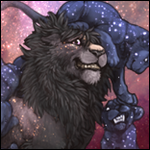

 4 players like this post! Like?
4 players like this post! Like? 


 4 players like this post! Like?
4 players like this post! Like?


 1 player likes this post! Like?
1 player likes this post! Like?


 3 players like this post! Like?
3 players like this post! Like?


 1 player likes this post! Like?
1 player likes this post! Like?


 0 players like this post! Like?
0 players like this post! Like?


 4 players like this post! Like?
4 players like this post! Like? Report
Report


